Stillalive420
Well-Known Member
I've never heard that one
How To Use Progressive Web App aka PWA On 420 Magazine Forum
Note: This feature may not be available in some browsers.

 They run at 36 watts and the ones under the filter at 49 watts. The middle 4 draw 36 watts each and the other 4 are the 55 watters. (Already straightened the cock-eyed one and slipped them all a little farther back.)
They run at 36 watts and the ones under the filter at 49 watts. The middle 4 draw 36 watts each and the other 4 are the 55 watters. (Already straightened the cock-eyed one and slipped them all a little farther back.)HA! You ungrateful buttdart! I go outta my way to put it in terms even a Canadian can understand... and this is the thanks I get? bwahahahahahaha


It was the strips that first caught my attention for the LM561c. I scoured 'baba for a couple weeks looking at all the options, worked up a spreadsheet, etc, and then checked out the tapes, which led me to the other forum and the DIY stuff being done with tape ...
But then I got a tip about a Chinese company that can produce boards like HLG has, the ones with 304 diodes on a 8"x12" board? So I took the plunge and ordered enough boards to be able to run 'em nice and soft and far away. It's something I've wanted for a couple years. Penetration and canopy depth are so much better if you can cover the sky with light and mount it at the top of the grow space. With the price I paid for these I can do just that. So it's basically the same as 16 3590s in a 4x4, but cheaper and with significantly better efficacy.
When I was looking at strips, I was thinking of running them at 1050ma, and mounting them an inch or two apart. That would have satisfied my requirements, but then I saw that tape was even cheaper and easier. Like the strips, you can cut them every 2-3 inches depending on design, so I was going to buy a couple sheets of 1/8 aluminum for mounting and heatsink. But then I discovered the Lu/W stats - much lower than they should be - due to the resistors needed to keep the segments at 12 or 24 volts. I seem to recall 140 Lu/W? Bad. Not much better than Citi 1818s. So, back to LM561s in long series for me. They run individually at 2.50 to 3.00 volts, and with 38 in series, the 108 volts that the 304 boards draw is a bit annoying, but I managed to work out combinations of parallel and parallel/series wiring and got away with only four drivers. HLG has another improved version using 288 diodes that's split into two channels in parallel, so that one only runs at 54 volts, and drivers are easier/cheaper.
I'm running mine with a 120H-C700 for 4 boards at 36 watts, a 120HC1050 for 3 boards at 36 watts, a 120H-C1400 for 3 boards at 49 watts and a 240H-C1050 for 4 boards at 55 watts.
Here they are laid out on the floor.
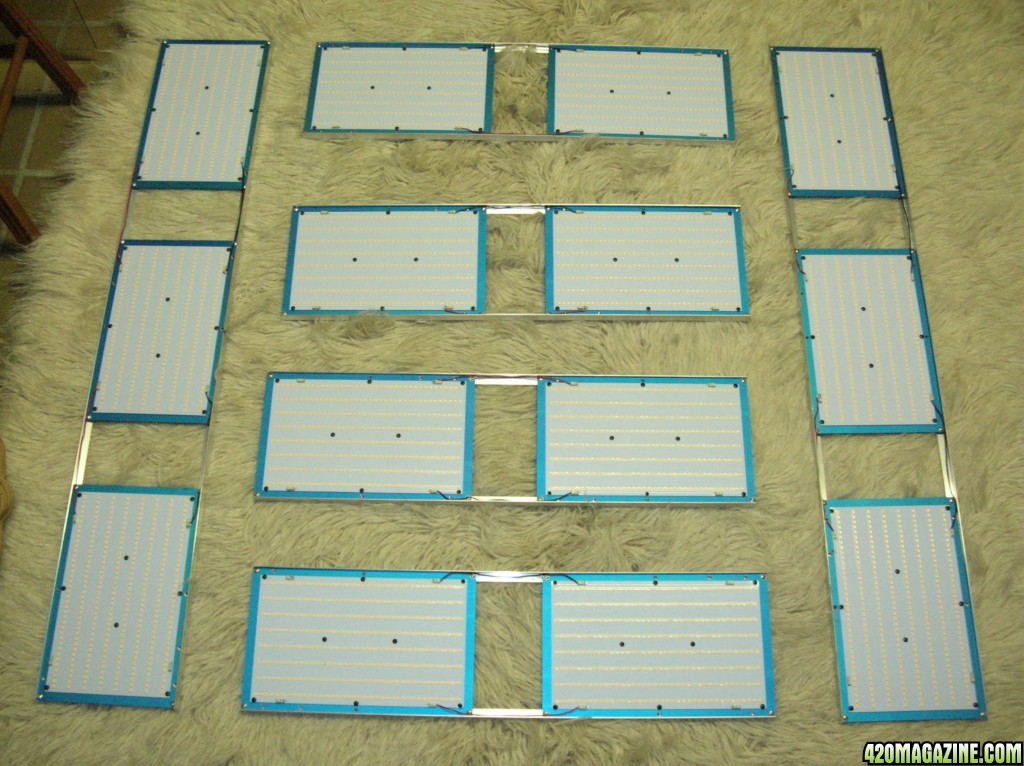
And this is how I mounted them. The filter got in the way of a perfect design, and I have that slanted back wall, so I used that to mount three across on the angle - should be interesting for penetration to the rest of the canopy anyway.They run at 36 watts and the ones under the filter at 49 watts. The middle 4 draw 36 watts each and the other 4 are the 55 watters. (Already straightened the cock-eyed one and slipped them all a little farther back.)
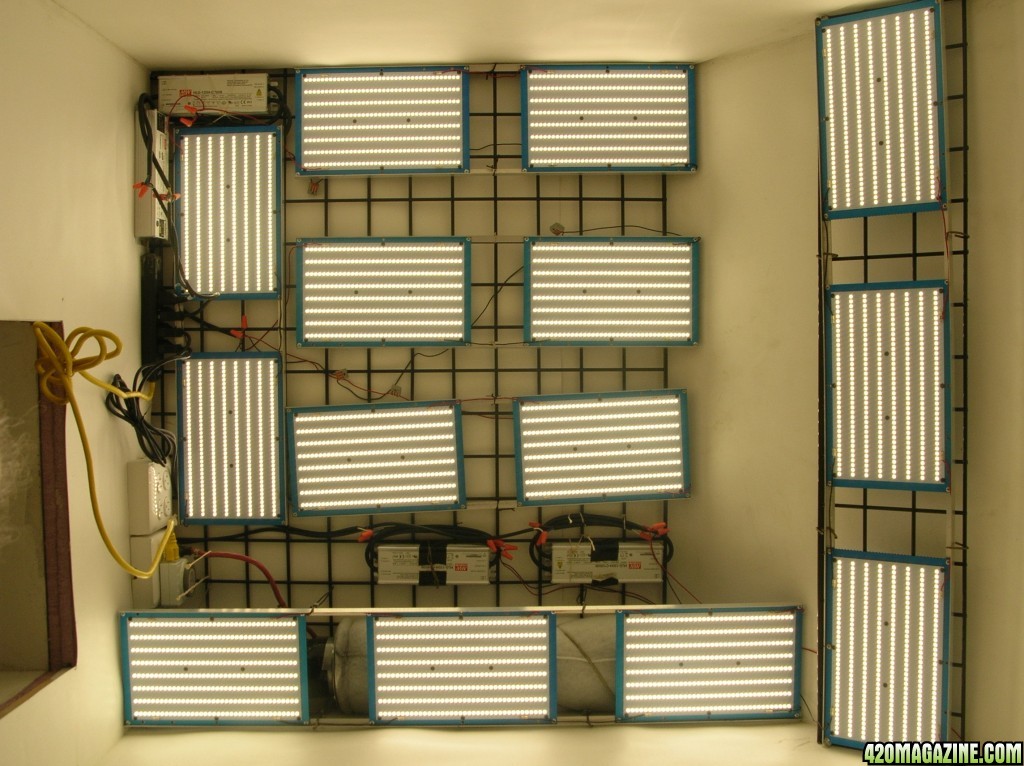
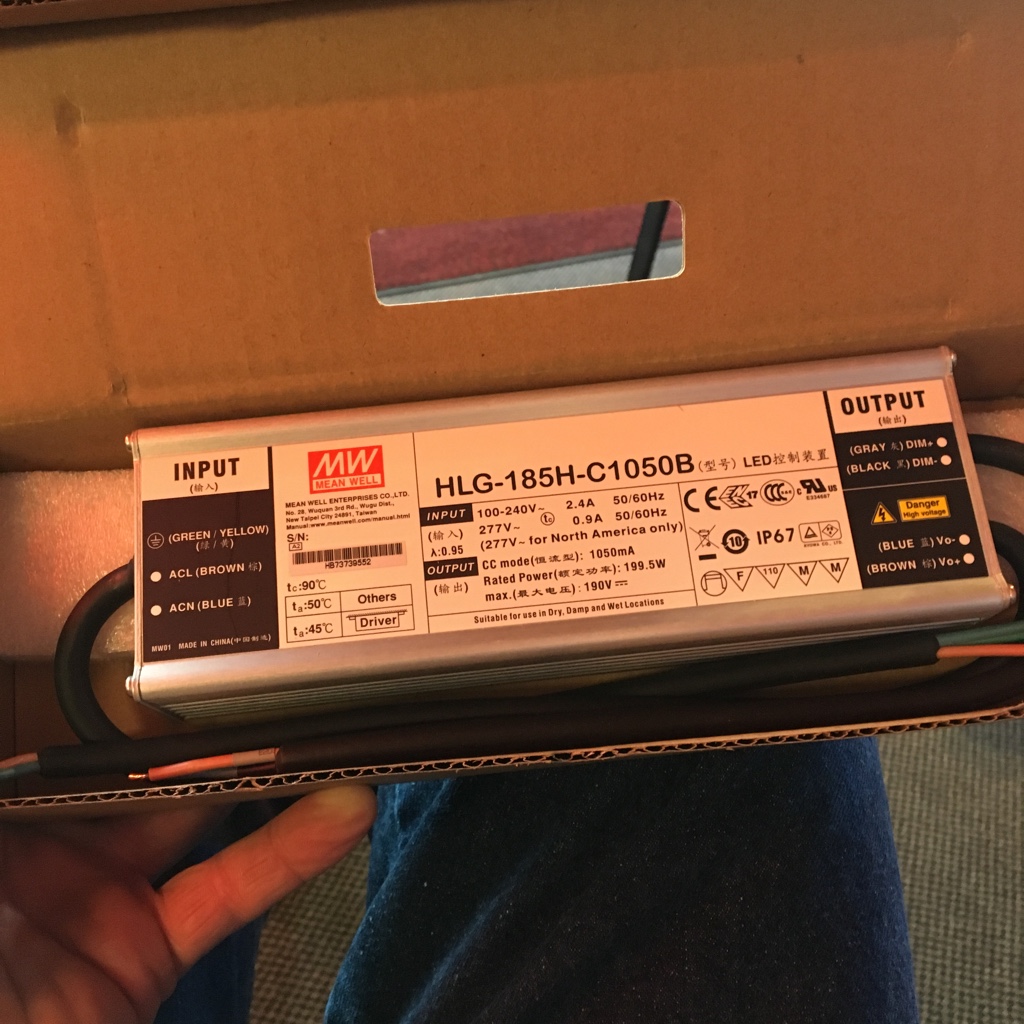

Hey rider I subbed up back on page one. This stuff is a little over my head honestly, but I'm trying. Are these Samsung units comparable to the quantum boards? I also saw u mention a much cheaper price. I am looking to light a (roughly) 4.5 by 4 area for flowering how many panels would you suggest?





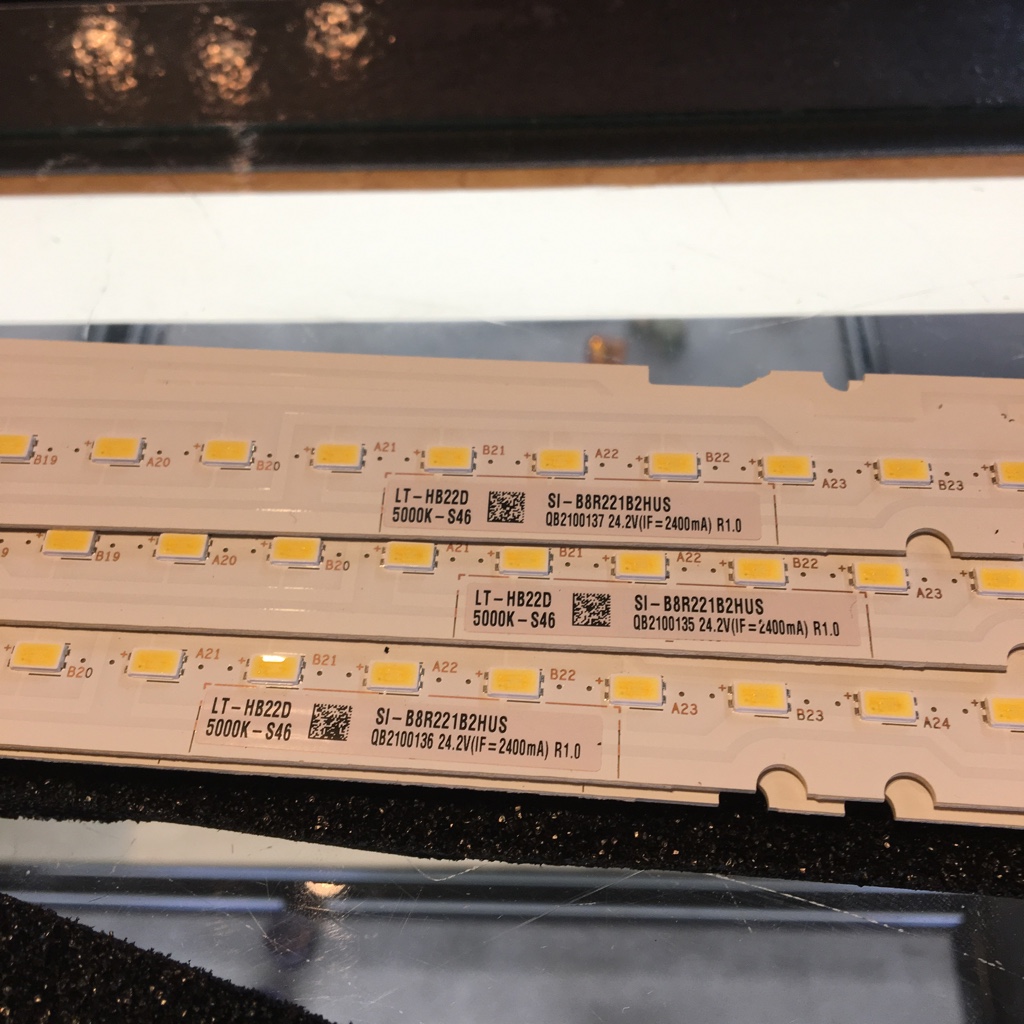
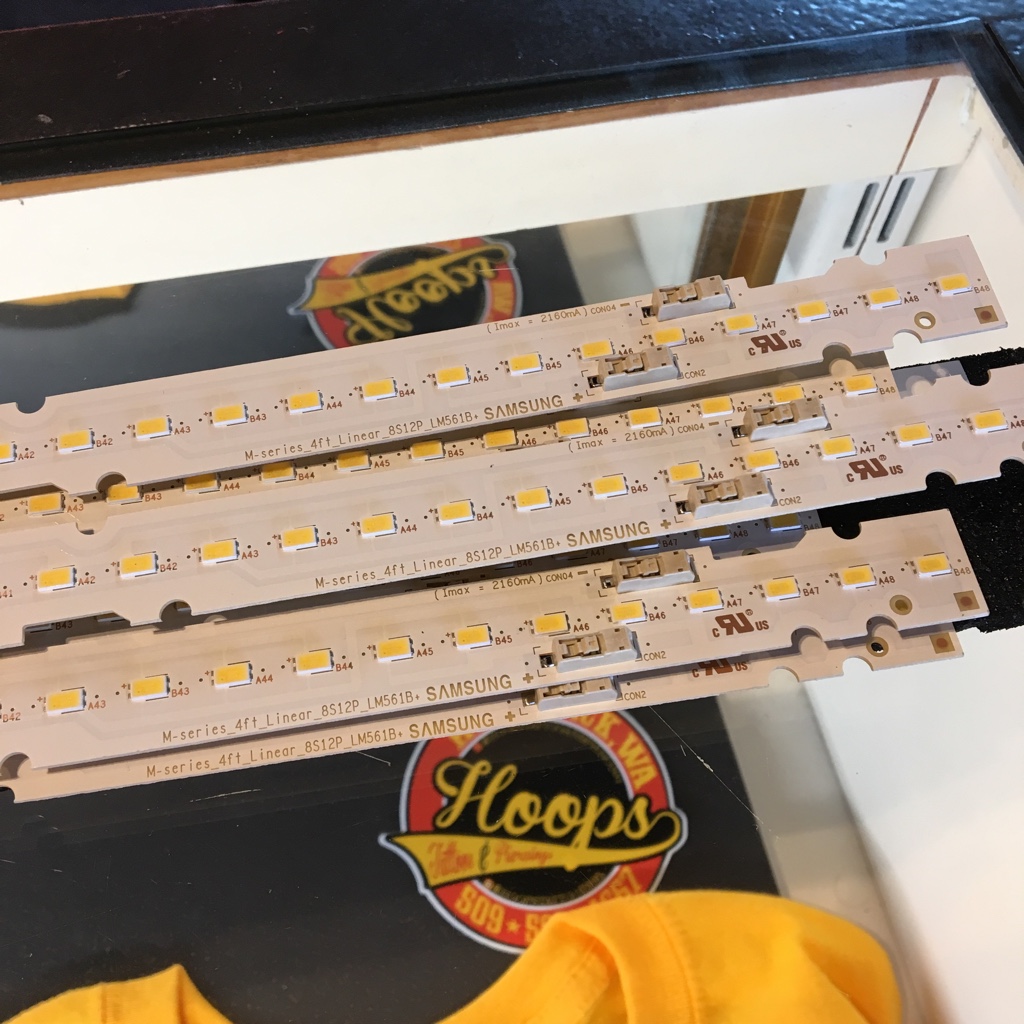
Finally had a chance to read the "fluence" articles. A great read for an LED newb like me. I was a little overwhelmed with all the terminology and units used to describe LED lighting but this basic understanding of PAR, PPF and PPFD now gives me a good starting point to work from. That article answered 3 questions but now I have 10 more. I suppose that s a good thing though. Thanks Rider.